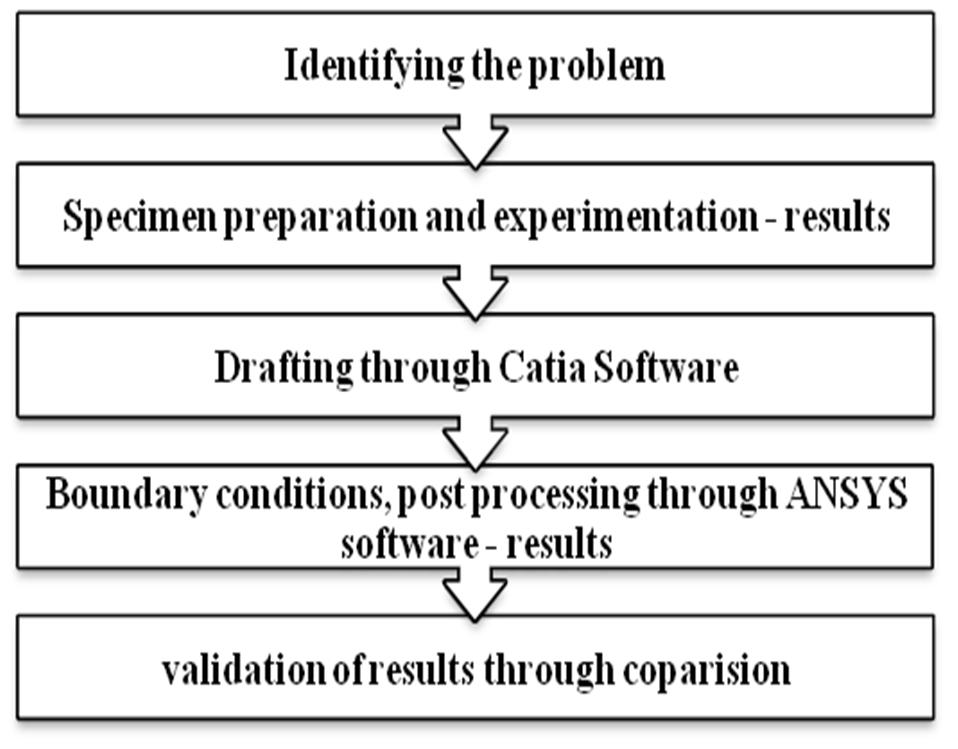
3 minute read
Transient Analysis on Excavator Bucket with Gray Cast Iron and Vanadium
R. Jagadeesh Kumar1, P. Kameswara Rao2, M. Gangadhar Rao3, R. RamaKrishna4
Assistant Professor, Lendi Institute of Engineering & Technology, Jonnada
Advertisement
Abstract: The excavator machines are power machines used in the Agricultural, Mining and Construction industry. The main purpose of this excavator is for digging, ground leveling and material transport operations etc. The excavator bucket part is subjected to various load forces. So in this project, the work is carried on the bucket by interchanging the composite materials like gray cast iron and vanadium. Since the bucket experienced so many loads like impact during digging transient analysis is carried out, the standard specimen prepared through stir casting technique and conducted tests on the specimen like tensile, compression, hardness, and impact test to validate the data. The main objective of this project is to design an excavator bucket using CATIA V5 software of 3-D modeling software. Then simulation did through ANSYS 19.2 software by transient analysis technique to know the deformation and stresses etc. And the results of deformation and stress are compared between Gray Cast Iron without Vanadium and Grey Cast Iron with Vanadium for comparing justified result.
Keyword: Excavator Bucket, Gray Cast Iron, Vanadium, Transient analysis, stir casting.
I. INTRODUCTION
The main purpose of excavator machine is for digging the lands or mines, demolition, lifting heavy jobs etc. in this paper analysis carried out digging type excavator and optimized by interchanging the material. In this paper the material chosen for preparing specimen though stir casting technique. The composition of material is 99.5 % of grey cast and 0.5 % of vanadium to enhance the properties of bucket6 . The comparative study with the structural steel and ductile cast iron excavator buckets, which are the most commonly used for manufacturing processes for an excavator bucket. In addition, it was preferred to develop an optimized material which will decrease the weight of the component and enhance the properties. The following table indicates enchantment of properties by using vanadium for the bucket material. And also comparison between without addition of vanadium for material for manufacturing bucket 3 .
II. METHODOLOGY
This is the procedure that can explain to determining the unknown parameters for the given excavator bucket as boundary conditions and solving the problem through transient analysis technique. The following procedure adopted to validate results5 The below flow chart describes the methodology to determining the problem in exiting design, drafting and analyzing the bucket, experimentation and comparison of results for validation.
ISSN: 2321-9653; IC Value: 45.98; SJ Impact Factor: 7.538

Volume 11 Issue III Mar 2023- Available at www.ijraset.com
III. IDENTIFYING THE PROBLEM
For a digging type bucket there is impact force created on teeth of the bucket while digging, so in less duration of time large amount force applied on the teeth. In that case more stress is induced in the teeth part.
The bucket is subjected to various loads but generally failure occurs at the fixed position of the bucket and bushing and this will be at the centre of the bushing or at teeth end of excavator bucket. In such a condition the failure is due to maximum stresses acting when the bucket carries load and also while digging. So the stresses are applicable at the bushing and teeth portion
IV. EXPERIMENTATION
A. Specimen Preparation
Stir casting is the method employed to prepare the specimens. Gray cast iron (ASTM 40) which has excellent casting performance and vanadium (99.5% & 0.5%) of weight to volume ratio have been taken into the consideration to prepare the specimen. Results show that the weight percentage of material exhibits better results1. The specimen was casted at 1204oC and at a stirring speed ranging in between 600-700 RPM for 15 minutes. Results implicate that the 0.5% inclusion of vanadium in raw grey cast iron has shown improvement of properties that are listed in the above table1. The standard specimen size mentioned below.
B. Testing
1) Tensile and Compressive Tests: A universal testing machine is use to conduct tensile and compression test conducted for given specimen showed in figure 1. And results listed below. The specimen fixed between two jaws of the UTM machine where load is increased gradually and readings are substituted in the given formula to determine maximum ultimate strength of the given specimen.
i) Tensile strength = ultimate load (P) / Area (A)

Where,
P = 133.831 KN
A = лd2/4 d=20mm = 314.159 mm2
Then, Tensile strength = 133.831/314.159 = 0.4259969 KN/ mm2 (or) 425.996 N/ mm2 ii) Compression strength = ultimate load (P) / Area (A)
Where,
P = 447.91 KN
A = лd2/4 d=20mm = 314.159 mm2
Then, Compression strength = 447.91/314.159 = 1.4257 KN/ mm2
2) Hardness Test
A Brinell hardness testing machine is used to measure the hardness number for given specimen. An indentation is used to determine hardness using this machine and results explained below. Here ball diameter (d) of the indenter (D) and load applied on the specimen surface and values are substituted on given formula

